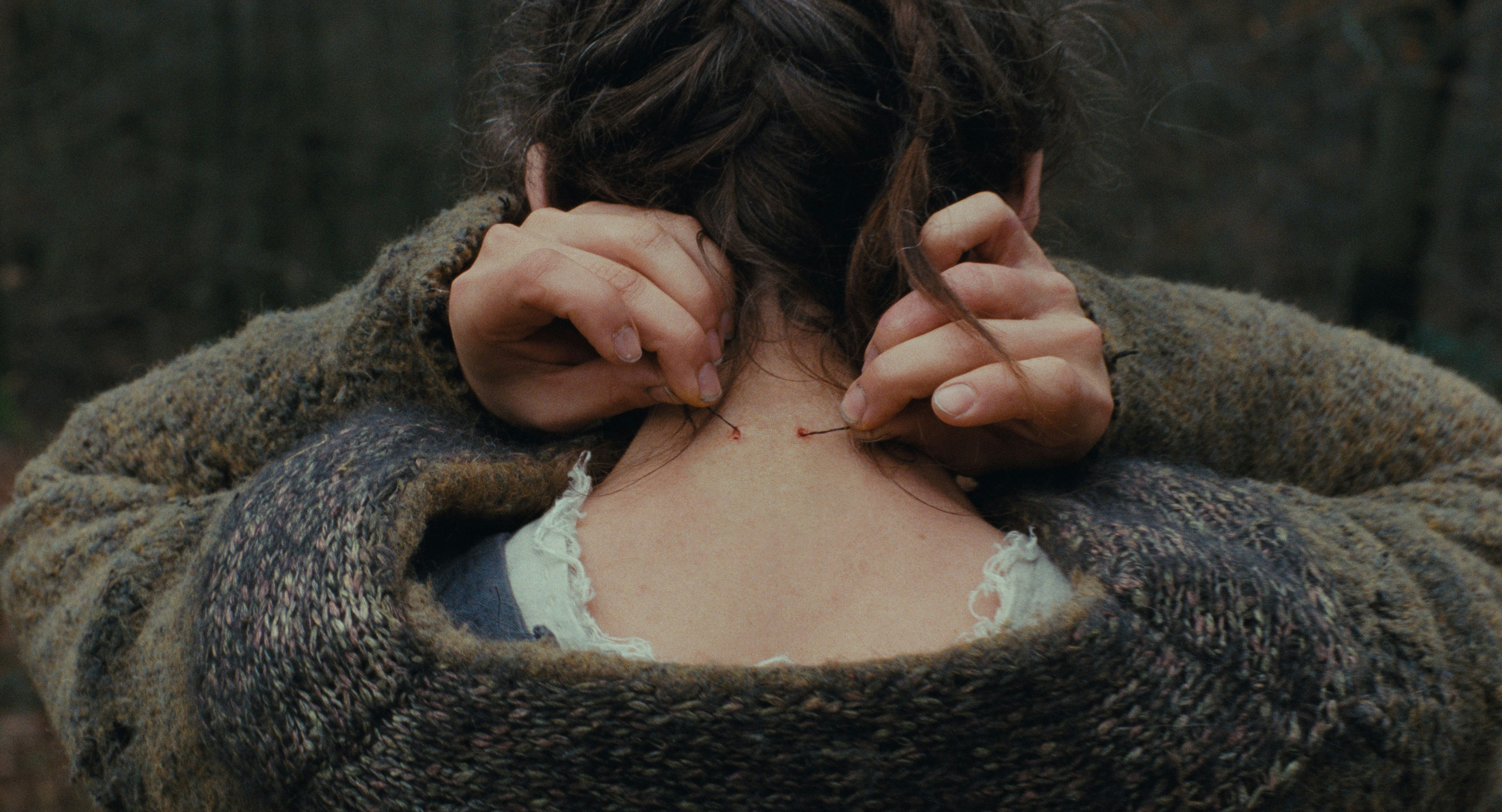
Few movies are as straightforwardly bleak as The Devil's Bath. Set in the mid-18th century, and based on historical records, the German-Austrian horror drama is as nihilistic as they come, and flies in the face of most modern, metaphor-heavy "prestige" horror. There's no sleight-of-hand involved in its depiction of depression and psychological malaise. Its melancholy is disguised as neither ghoulish shadow nor chilly atmosphere — though there's plenty of fog to be found — but rather, the film's portrayal of despondency is bold, direct, and upsetting in ways that may not suit most audience's tastes.
However, if you're on the wavelength of its filmmakers — writer-directors Veronika Franz and Severin Fiala, the aunt-nephew duo behind The Lodge and Goodnight Mommy — you're guaranteed a uniquely ugly experience that's also shocking in its simplicity. You're also guaranteed a film you might love, but will never want to watch again.
An unsettling prologue yanks us into a strange rural township, where a woman commits a heinous crime, but immediately confesses her sins, and is executed just as swiftly. This casts an eerie shadow over the forthcoming tale of Agnes (Anja Plaschg), a young and deeply pious woman who happily marries her sweetheart Wolf (David Scheid), but whose marital bliss soon fades in favor of oppressive routine, courtesy of Wolf's changing behavior, and the looming presence of his mother (Maria Hofstätter) in their new home.
The aforementioned plot could easily apply to any period domestic drama, but what sets The Devil's Bath apart is its deeply uncanny quality. It almost never presents its most gut-wrenching spectacles as out-of-the-ordinary, starting with a wedding gift to Agnes in the form of a severed finger. This ought to be disturbing — and will be, to any viewer — but is treated with the utmost normalcy by the characters, and by the camera. Something evil is in the ether, but not always within the movie's fiction. Rather, this applies to the fabric of the fiction itself. The film feels deeply cursed, as though what we're watching weren't so much planned and executed by traditional means, as it were created organically through a deeply evil ritual.

It's a film from some satanic realm, its alien qualities are usually grounded in familiar sorrows. Agnes may often escape to strange, extraordinary, and morbid shrines hidden away in the forest — sometimes entirely Christian, sometimes otherworldly — but when she returns home, the film's domestic status quo becomes far more punishing than any creepy genre trope could hope to. Her husband gradually loses interest in her sexually, and becomes more controlling. Her mother-in-law's intrusions become more domineering, and she can never do right in their eyes, whether in the kitchen, or while assisting in the village's collective fishing efforts. It's a story steeped in a deep unhappiness, which gradually radiates outward and infects everything around it.
Agnes also can't seem to bear a child, as much as she might want to. The film, and her new family, place the immense weight of gendered expectations on her shoulders, along with the weight of sin, until she slowly begins to crack. Along the way, Plaschg delivers an immensely considered performance that slowly becomes poisoned by desperation and sorrow. This journey is mirrored by the movie's eerie, skin-crawling score, composed by none other than Plaschg herself — a double-duty that grants her complete control over a story in which she's robbed of it. She's practically the movie's co-author.
However, at no point does The Devil's Bath tip its hand about what contemporary meanings it might be trying to enforce, or even what the film is truly "about" beneath its surface. None of it is disguised, per se; it's just that Franz and Fiala would prefer to immerse you in Ages's misery without stepping away from it or pulling back to reveal its broader implications. In fact, the movie ends with a concise explanation (via onscreen postscript) that all but explains the history behind Agnes' story through a modern lens. But this never feels like a misstep or audience hand-holding. Rather, it frames the film as a piece of history oft-forgotten or misinterpreted, and it remains open to these misinterpretations too, before eventually clearing them up.

Veracity may not be its most important criteria (this is rarely the case in historical horror), but what is or isn't factually accurate is hardly as vital as the emotional truths The Devil's Bath puts forth, about the dehumanizing mechanics of gendered social norms, and the way they slowly rob women of their sense of self. The events may have happened exactly as described, but by placing the camera at a languid distance and limiting close ups to key moments, Franz and Fiala become observers of history — and of the historical treatment of women's emotional and physical woes — whose commentary is born not through verbose explanation, but through editing and visual design.
It's a film that unfolds in shadows, in the dark corners of Agnes and Wolf's home during daytime, and in bleak, desaturated landscapes. The elliptical editing lures us into and out of scenes through atmosphere, rather than action or dialogue, using impactful sensory details like dead animals, or blood dispersing in the rivers — whose origins, while revealed to be surprisingly simple, also inform the movie's social fabric.
By the time the credits roll, it's hard not to feel complicit in the movie's horrors — like a bystander who merely observes what they've been conditioned to perceive as normal. The result is severe emotional disconnect between the illusory comfort the film suggests, and a visceral disgust deep down, forces that clash and wrestle within your gut, in your subconscious. There's a sense of ritual about practically everything on screen in The Devil's Bath, and when the full nature of the town's own superstitions fades into view, it becomes everything from rousing, to disorienting, to viscerally sickening, often all at once.







